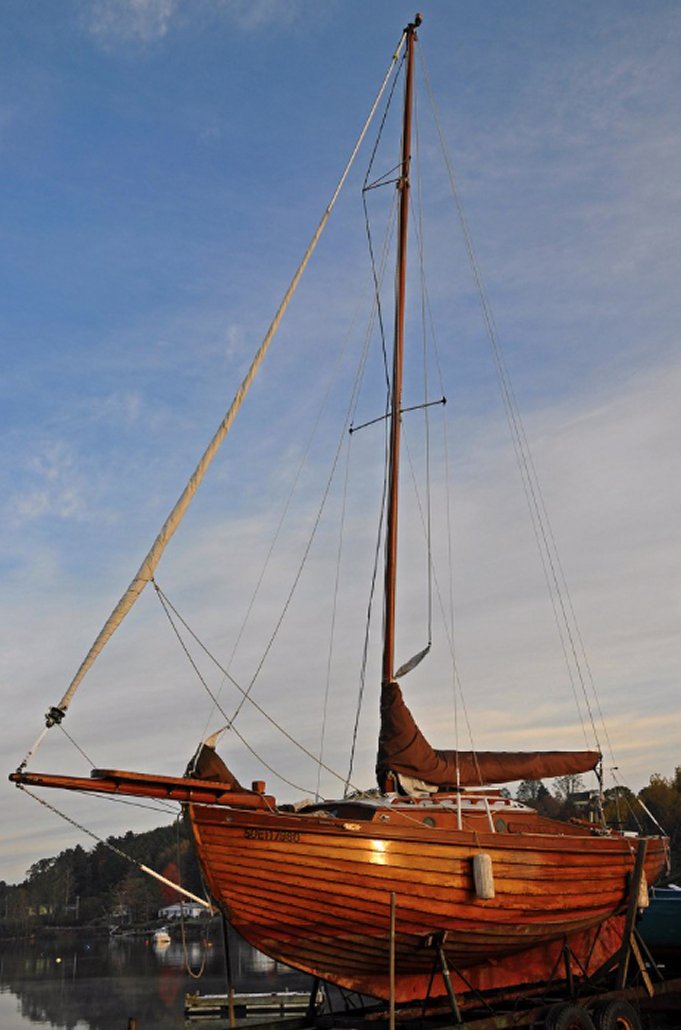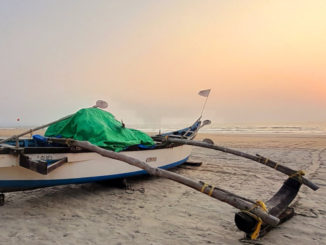Jacques (As You Like it, Act 2 Scene 7) describes seven ages of man. In looking back on my own life I can identify with the first four and, being near the early stages of the sixth at time of writing look forward with trepidation to the seventh and last.
But people live longer these days than they did in Shakespeare’s time so I think that if he were writing today he’d insert another “Age” to cover a period of Active Retirement that he would name much more poetically than I can.
Here is my effort with the last lines of Shakespeare’s previous verse and the first of his next to bracket it – I haven’t yet had the presumption to change the first line of his verse so the numbering is consistent.
“Full of wise saws, and modern instances,
And so he plays his part.”But no-one listens any more, and tired of talking to an empty room
He seeks to re-create his middle age and goes ba-boom.
I need a new pursuit on which to zoom.
And this enthralls him for a while, as he sails for many a mile,
Until his body tells him to desist, else he might, regrettably be missed.“The sixth age shifts
Into the lean and slipper’d pantaloon,”
I don’t think this scans properly but hope the commentariat will understand the idea and come up with something better.
1995 and 1996 were years of momentous change for me during which I transitioned very rapidly into such a new “Age” that lasted until 2014 and 2015 before changing again into the mildly active but less adventurous period that is now coming to an end.
In brief, I retired, bought a newly made yacht and sailed it to over 50 countries around the world. End of story unless you read on because you’re interested in more detail and would like to share some of the experiences and sights I so much enjoyed myself.
Writing these articles has vividly revived memories of the early years of this change. I am now amazed at some of the decisions I took that could have ended disastrously but fortunately did not. I didn’t get everything right but somehow or other scrambled over or around most mistakes.
The main decision of course was to buy my own yacht. That required so many secondary decisions they appeared one after another like machine gun fire.
I now set out to explain the main ones and hope they will be of interest to enough readers despite the rather detailed accounts of the technical and commercial issues involved. Anyone interested only in the human and geographic side of the story may pass over the rest of this article and rejoin the series later when I reach the stage of taking delivery and early days – provided I get that far.
Jack London was a journalist as well as an author of adventure books and one of his motivations for going sailing in 1907 was to create the raw material from which he could derive further earnings. He wrote a book about his experiences too – The Voyage of the Snark – I found a copy on my father’s bookshelves. (My father never sailed himself because he became sick as he approached the sea from the landward side, but he clearly loved adventure.)
London’s book gets a bit dull and repetitive in its later chapters but its early ones are fascinating. The Snark was much larger than the yacht I bought. Jack and his boat-builder made even more mistakes than I did, perhaps because I had the benefit of his account about problems that arose during her construction and early days afloat.
A good place to start thinking about different yacht designs is a discussion of the material from which her Hull should be constructed and what shape it should have.
The principal candidate materials are wood, steel, concrete and Glass Reinforced Plastic (GRP) but there are many others.
Wood looks beautiful when new or well-maintained but needs constant “tlc” to keep up her appearance and prevent seams from opening up, rot developing etc.

“DSC_0654” by archer10 (Dennis) is licensed under CC BY-SA 2.0
Steel is strong when new and great if one wants to sail in high latitudes where floating ice can be a problem or in waters where there is a high risk of hitting rocks or underwater obstacles like discarded containers floating just below the surface. Steel hulled replicas of Joshua Slocum’s “Spray” are popular with aficionados but I didn’t consider myself to be one of those and I was certainly nervous of the heavy rigging and spars.

Public Domain
Rust is a powerful antagonist on steel-hulled craft. I once met a Danish sailor with a steel hulled yacht in Trinidad. He was in despair because rust had developed in the hull and penetrated far enough to cause irreparable damage to internal water and fuel tanks and so on. To make repairs, virtually all the internal fittings and equipment had to be stripped out to gain access to the affected parts – he was worried about how much that would cost and would it be worth doing?
Concrete is also very strong when thick enough. Therein lies its main problem because when thick enough it is very heavy and that makes yachts with concrete hulls very slow in light winds and harder to lift out of the water when the hull needs new anti-fouling and other maintenance.
GRP is strong when new and carefully made in a dry environment. It consists of slivers or woven mats of glass embedded in a plastic resin that chemically binds the two together. It is also comparatively light and needs relatively little maintenance compared with wood or rust-infected steel. Most leisure yachts nowadays are built using GRP, but it isn’t entirely free from maintenance needs and potential problems.
Amongst the biggest risks are the use of unsuitable resins and the formation of air-bubbles or moisture ingress during manufacture or in use. The latter can occur through a process called Osmosis used to describe the penetration of one material by another at molecular sizes. Botanists know a lot about Osmosis because that is how plants draw water-borne nutrients from the soil to feed their flowers, foliage and structural members.
Boat-builders try to prevent water from entering GRP hulls by encasing them in a thin layer of a less permeable material called Gelcoat with a thin epoxy layer applied to that on underwater surfaces before finishing with two or more coats of permeable anti-fouling paint. If water does get through the epoxy and Gelcoat it can react chemically with the resin causing its bond with the strong but brittle glass to break down thus generating blisters and loss of strength.
This was one of the factors dissuading me from buying a second-hand boat because the problems of Osmotic blistering only became apparent during the 1980’s and early 1990’s on boats made 10-20 years previously. They are less common nowadays because materials and techniques have improved over the last 25 years but still merit attention to ensure cost-reduction pressures haven’t resulted in cheaper materials and production short-cuts being used.
Having thought about all these matters I decided to buy a new boat from a competent builder with a good reputation (whoever that might turn out to be) and that the hull for my boat needed to be made from GRP.
The next issue was to decide on the most suitable shape.
The theoretical maximum speed of a displacement craft that doesn’t rise out of the water and ‘plane along the surface is about 1.4 x the square root of its water-line length. Yachts optimised to sail quickly typically have long waterlines for this reason and are broad in the beam to maximise rolling resistance that incidentally also increases internal accommodation. They also have short deep keels and minimally shaped and mounted rudders to reduce friction with the water that is typically proportional to the wetted underwater area and the square of the boat’s velocity.
Those characteristics tend to make such yachts fast and popular with Racers who wish to win public acclaim or lasting renown. They are also popular with Sailing Schools and Charter Companies whose business models depend on attracting as many paying participants as possible and giving them an exciting time whilst on board.
But such yachts tend to plow through waves or slap down hard and noisily upon them. Their deeper keel makes them more vulnerable to grounding in shallow seas and their unprotected rudders more vulnerable to impact damage from underwater obstacles. They also tend to be directionally unstable when upright and stable upside down if inverted – as Tony Bullimore experienced when he was capsized during the Vendée Globe race two years after I was considering these matters.
At the other end of the spectrum are so-called long-keel yachts. These have a shallower keel that runs for virtually the entire length of the hull. They are usually slower because of the greater wetted area. They are very directionally stable but so much so they are a good bit less manoeuvrable under both engine and sail thus creating difficulties in tight spaces and when changing direction by “tacking” through the wind.
Some boat designers, especially those working in the 1970’s and 1980’s, evolved compromises between the fast deep keel approach and the slower long keel one. These usually had more gently inclined angles from deck to water at bow and stern, and often had a length of shallower keel aft of the boat’s mid section before deepening again to provide support at the foot of a substantial rudder.
I wasn’t sure whether I wanted to sail long distances across oceans but I did want a yacht that was capable of doing so as safely and comfortably as possible if that’s what I decided to do as I gained more experience.
These thoughts led to the conclusion my yacht would need to have a strong hull made of GRP and a fairly traditional shape with middle-of-the road proportions aimed at providing a smooth ride on top of the water that would also roll upright again if accidentally inverted.
Attending sailing school to learn the “Rules of the Road at Sea” and gain sea-time, coupled with trying to make sense of these hull design issues, fully absorbed my mental and physical capabilities for several weeks but still left open the questions of sails and rigging, equipment above deck and below, and how to go about choosing a particular design and boat-builder.
To be continued…
© Ancient Mariner 2020
The Goodnight Vienna Audio file
Audio Player



